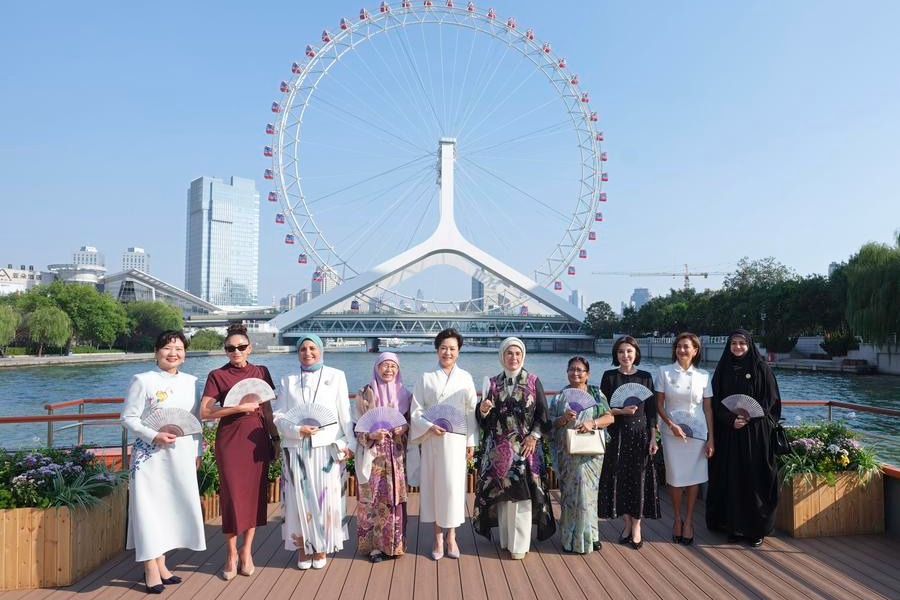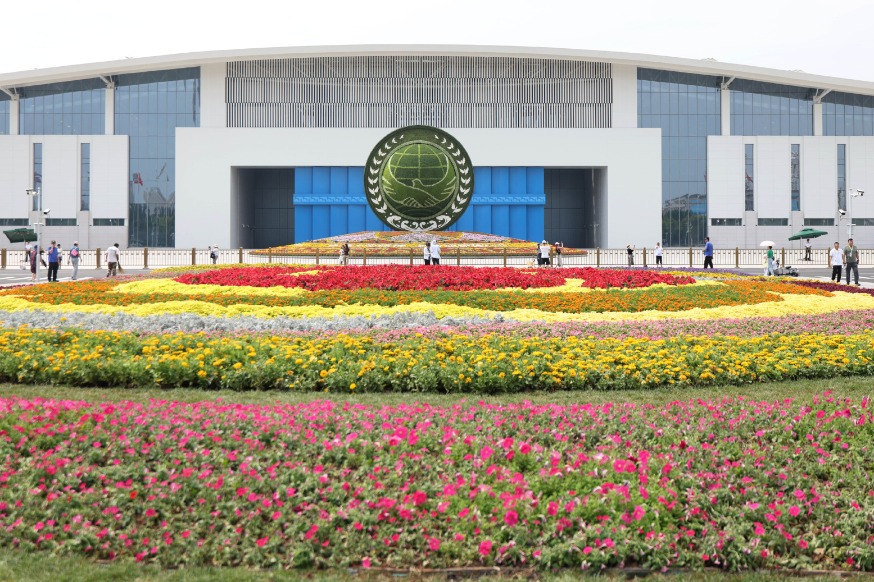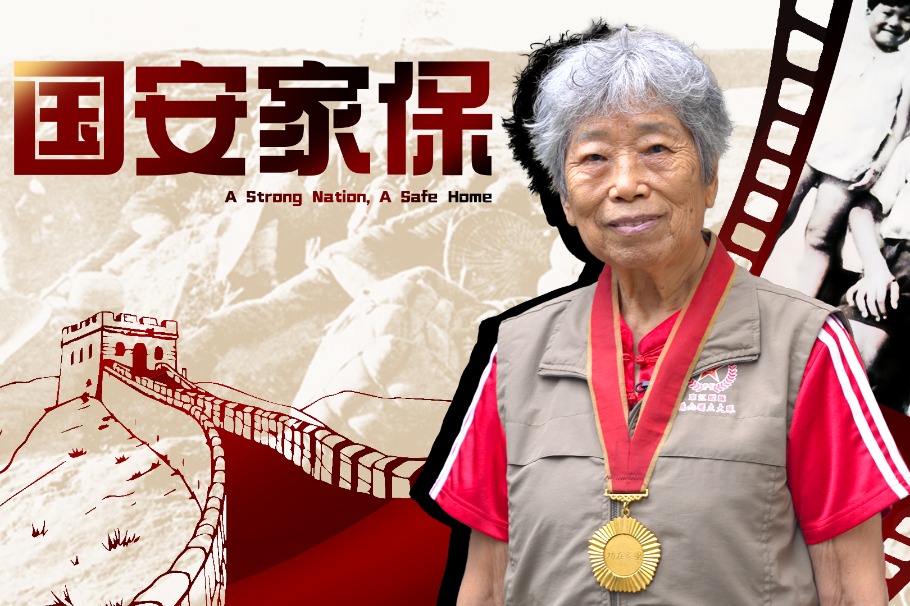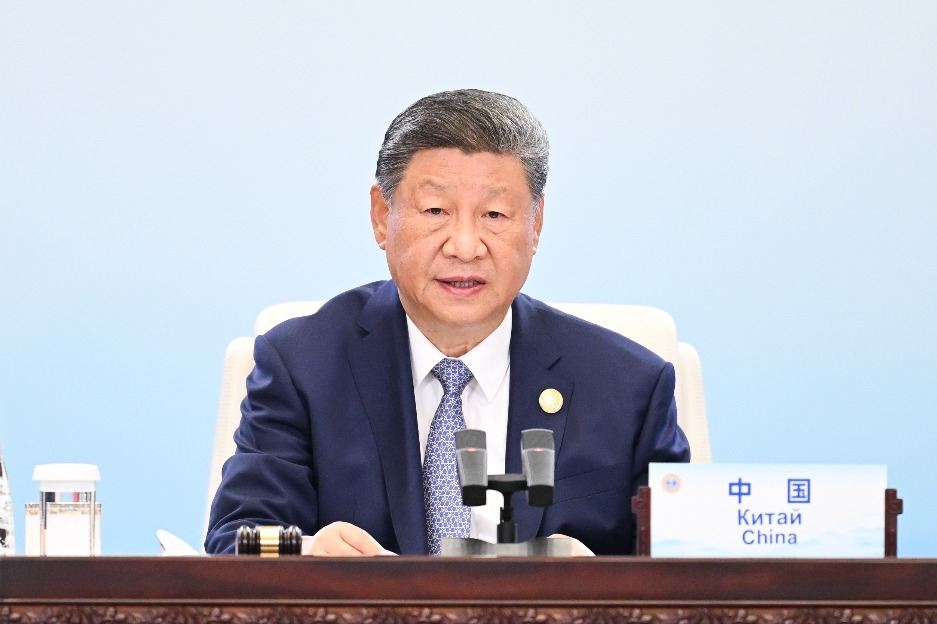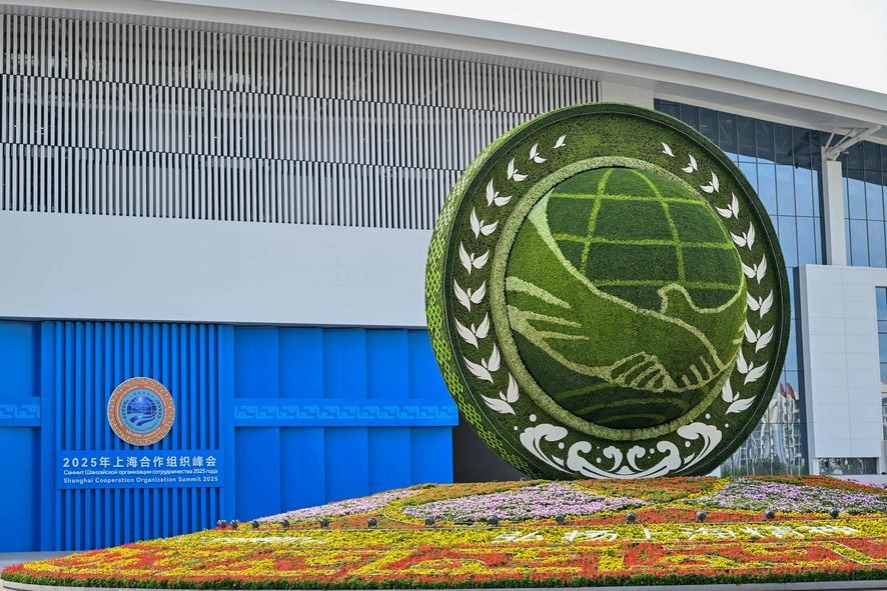After 100 years, hidden stories of struggles come to light
Opening of Chinese Canadian Museum marks centennial of exclusion act

Editor's note: The Chinese Canadian Museum was opened in July on the 100th anniversary of the Chinese Exclusion Act, which was repealed in 1947. This page takes a look at Chinese trailblazing efforts that helped build the country, and the century-old fight against racial discrimination.
With the opening of the unique Chinese Canadian Museum on the 100th anniversary of the Chinese Exclusion Act, the hidden story of Canada's discrimination against Chinese immigrants can be told in detail.
Located in the historic Wing Sang Building at 51 East Pender Street in Vancouver Chinatown, the museum brings a sense of both homecoming and historical acknowledgment.
On the first day of the museum's opening to the public on July 1, a group of Chinese descendants of payers of the discriminatory Head Tax gathered at the museum to look for information on their ancestors.
The museum's opening feature exhibition The Paper Trail to the 1923 Chinese Exclusion Act explores Canada's exclusion years from 1923 to 1947, the darkest period for the Chinese community in Canada. It reveals haunting stories of loss, despair and fear, as well as powerful examples of courage and perseverance despite incredible odds.
The opening of the Chinese Canadian Museum is a groundbreaking and momentous occasion for Canadians to honor the history, legacies and contributions of Chinese Canadians throughout the generations, according to Grace Wong, board chair for the museum.
"One hundred years later, we are able to tell the full history of the Chinese Canadians and their struggles and contributions made to this country, along with public education, because the story of Chinese Canadians is a part of the history of Canada," Wong told China Daily, adding the opening is just a beginning.
Melissa Karmen Lee, CEO of the museum, said the Chinese Canadian Museum has a unique role as a gateway to the historic and artistic traditions of the Chinese-Canadian diaspora for Canadians and international visitors who wish to better understand Canada's history.
Growing up on Vancouver's East Side, Lee was one of many children in her neighborhood who never saw herself reflected in a museum.
"I know the feeling of not belonging in a culture, and as a young Chinese Canadian may not understand why our histories could be valued so much in the exhibition," Lee said. "Now as a CEO, I know how that feeling limits the horizons of too many young people."
Donald Wehrung, a professor at the University of British Columbia, said it is heartening to see the artifacts of the exclusion era exhibited in the museum. "It was a serious flaw in Canadian history, but we need to recognize our weaknesses and our errors of the past, going to prevent them in the future," Wehrung told China Daily.
Senator Yuen Pau Woo told China Daily the opening of the museum was an immensely proud moment for Chinese Canadians. It is a permanent marker to recognize the contributions that the Chinese made in this country and will continue to make for years to come, Woo said.
But it's not going to happen automatically, he said.
"This is just a physical structure that reminds Chinese Canadians, and all Canadians, of the contributions of our community, but the community itself, particularly the next generation, will have to take action," said Woo.
Dignitaries and members of the Chinese community from across the country celebrated the new page in Chinese Canadian history with a dance of dragon, a sacred creature of ancient China symbolizing strength, power, dignity and determination.
David Eby, premier of British Columbia, or BC, told China Daily the story of the museum is a symbol that the community has pushed back against outright racism.
Symbol of endurance
"The museum is not only a physical building, but a symbol of the remarkable endurance, perseverance and achievements of the Chinese Canadian community," he said.
Eby recognized that 100 years ago, the Chinese Exclusion Act was championed and pushed by the British Columbia government.
"When I had a chance to sneak-preview the exhibit in the museum, I got a sense of the deep history and the hurt and the pain that legislation caused, and that story of the key role of the Chinese community and BC needs to be told," he said, noting the museum has created a foundation for education and understanding of the critical role of Chinese Canadians.
The museum also features a recreated period living room with interactive antique objects that bring visitors back in time to the 1930s, when the original Wing Sang Building owner, Yip Sang, and his family lived in Chinatown.
It also displays one of Vancouver's oldest school rooms registered in 1914 that served as a classroom for the community, and a separate introduction gallery space that will feature Odysseys and Migration, an exhibition that explores the Chinese diaspora from the early waves of immigration to the present day.
Everything in the building has a significant meaning. The pictures, the artifacts, the documents, each one of them tells stories of struggle, perseverance, accomplishments and how individuals of Chinese descent have contributed to the nation, according to Ken Sim, the first Chinese-Canadian mayor and first Asian mayor of Vancouver.
"The museum does celebrate the endurance and the triumphs and the incredible contributions of Chinese Canadians, to our city and our country," said Sim. "As you know, racism stems from ignorance, and if we educate people, we will go a long way in making our country more inclusive."
The Chinese Canadian Museum has received $5.18 million from the federal government and $10 million from the province of BC. It also received vast donations and contributions from the Chinese and Canadian communities, including $2.8 million from Vivienne Poy, the first senator of Chinese descent, and her family.
Poy told China Daily the museum is vital to the history of Chinese Canadians. "We all need to learn a lot about what happened (in the) past in Canada, and the museum will record everything for us and encourage us to work together to create a new history," said Poy.
In the 1880s, 17,000 Chinese pioneers arrived in Canada from Guangdong province. They helped build the first transcontinental railroad — the Canadian Pacific Railway, or CPR; 4,000 lives were lost due to unsafe working conditions, landslides and the premature blasting of dynamite.
However, right after the CPR was completed in 1885, the Canadian government imposed a punitive Head Tax to deter Chinese citizens from coming to Canada. But raising the tax twice wasn't enough to stop the Chinese, so the Canadian government turned to legislation to formally institutionalize racism — the Chinese Immigration Act (aka the Chinese Exclusion Act) on July 1, 1923, the anniversary of Confederation. From then on, July 1 was "Humiliation Day", not Dominion Day (Canada Day) for many Chinese Canadians.
The legislation inflicted intergenerational trauma on an already marginalized community. It separated families for decades and created trauma and scars.
The Paper Trail exhibit at the new museum refers to certificates of identity documents, or C.I. certificates, which were issued in receipt of the Head Tax payment required for entry of Chinese into Canada. Registration stamps on the back relate to the Exclusion Act.
The C.I. certificate of Fred Wong's father is among the hundreds of papers. Wong, the former director of Calgary Transit, told China Daily the display is very emotional for him.
Wong's father An Lee Wong came to Canada in June 1922, one year before the act was passed. But he couldn't get back to China until 1933, when he married, and left his pregnant wife in China the same year. "He didn't know whether or when he would see his wife again," Wong said sadly.
Wong's oldest brother was born in 1934 in China, and he and his mother couldn't come to Canada until 1949, after the Exclusion Act was repealed in 1947. "From there, well, it was the first time my oldest brother met his father, at the age of 15," Wong recalled.
Wong was lucky as the family finally reunited in Canada. But many others were not fortunate, as many men came to Canada to work and lived a bachelor's life for a long time or permanently due to the act.
Being a Canadian of Chinese ancestry, Daniel Quan-Watson, deputy minister of Crown-Indigenous Relations and Northern Affairs Canada, told China Daily his family members have been separated through generations because of the Exclusion Act.
His grandfather arrived in Canada 100 years ago, but his grandmother and his father were not able to come to Canada until 29 years later, and his older brother was not able to arrive for another 17 years.
"My two uncles who were separated from their fathers are still living here in Canada, and they remember very well being separated because of the exclusion," he said.
During the exclusionary period, fewer than 50 Chinese immigrants were allowed entry. The population decreased by 25 percent. Not only did the law ban Chinese immigration, but it also intentionally disrupted family life and stunted community growth.
In 1941, there were 29,033 Chinese men in Canada, more than 80 percent of whom were married, with wives and children left behind in China. Enduring the family separation, the "married bachelors" lived alone.
For Chinese Canadians like Gerry Yee, the exhibition brought back sad memories of his father Harry Yee, who was forced to pay the $500 tax (about $8,000 in current times) when he came to Canada as a 12-year-old in 1923, just one month before the Chinese Immigration Act went into effect on July 1.
"So, he just made it on time. Otherwise, he would not be permitted to enter," Gerry Yee told China Daily.
But once Harry Yee arrived in Vancouver, he stayed in a detention facility, which the Chinese called the "pig house".
"This obviously wasn't very pleasant circumstances," Gerry Yee said.
Harry Yee's father was a railway worker who came to Canada earlier to help build the CPR. He stayed in Canada after the completion of the railway because he didn't have enough money to return to China.
Pain of separation
"My ancestors from China arrived more than 100 years ago to seek a new and better life. Their sacrifices and perseverance will not be forgotten by our family. For us, it is hard to think of the pain of separation, loneliness from loved ones so far away," said Gerry Yee.
When Harry Yee went back to China for the first time in 1928, he got married. The young couple could stay together no more than two years. If he stayed in China for more than two years, he could not return to Canada under the exclusion law. Harry Yee left his wife right after their first child, a baby girl, was born, Unfortunately, the girl died young.
Harry Yee's first wife was not able to come to Canada. He remarried in 1947 in Canada, and the couple raised four children, including Gerry.
In 1989, Harry Yee finally returned to his ancestral village in Toi San county, currently known as Taishan, Guangdong. It had been 51 years since he last left his hometown.
Gerry Yee described the trip: "I was with him on that journey that was emotionally overwhelming for him and me. Seeing his first wife and many relatives, young and old, was pure joy. He was singing songs of his youth and savored every moment of the familiarity of the language, scenery and atmosphere."
Andrew Ong Dick traveled with his wife and son to the museum from Edmonton, Alberta. Standing by the C.I. certificate of his grandfather Jett Mah, Dick recalled fragmented memories of Mah and his family.
"My mom would be very upset talking about her father, because he died young, and she did not spend too much time with him," Dick told China Daily.
Mah was born in Toi San as well and arrived in Canada in 1913 as a 15-year-old, following his older brother who was already settled in Alberta. He returned to China in 1932 to marry.
"My grandmother was unable to come to Canada because she didn't have the right papers," said Dick. "My grandfather had to support his wife and daughter by regularly sending money home."
'Great opportunity'
Dick's son said it was a great opportunity to remember Chinese ancestors in the museum.
"This is a great opportunity to remember our forebears and remember our history and our culture and tradition," he said, showing a copy of his great-grandfather's picture on his phone.
Catherine Clement, The Paper Trail curator, said she began crowd-sourcing the C.I. certificates from across the country four years ago. Because many ripped up their certificates upon the 1947 repeal of the Exclusion Act, there are only a few thousand left out of the 97,000 issued.
"The very things that we hated — these objects of control and surveillance — are the things that help us trace back the story of exclusion," said Clement.
The exclusion of Chinese immigrants during 1923-47 was designated a national historic event in June 2023. A commemorative bronze plaque from Parks Canada was also unveiled during the opening ceremony on July 1 to mark 100 years of the Chinese Immigration Act of 1923.
Canada's Minister of International Trade, Export Promotion, Small Business and Economic Development, Mary Ng, who attended the opening ceremony and unveiled the plaque, said the Exclusion Act not only prevented Chinese from entering Canada, but also reinforced negative stereotypes and prejudice among those in the Chinese community. As a result, Chinese Canadians faced immense discrimination and racism during that dark chapter in history.
"But Chinese Canadians with resilience and perseverance didn't give up. They didn't accept this discriminatory treatment lightly. They organized and they launched advocacy after advocacy to campaign (for) the repeal," said Ng. "And finally, in 24 years, it was 1947 that they repealed this piece of legislation."
She called the new museum a monumental advance for continuing education and preserving the deep-rooted national history, art and heritage of Chinese Canadians.
A study in Ontario shows that the Chinese population of the province is 11 percent, but the percentage of Chinese Ontarians in leadership positions on various institutions' boards is 2 percent.
"Eleven percent of the population and only 2 percent of the leadership positions, some of it may be discrimination, but some of it also is our own community not yet willing to step up," said Senator Woo. "I encourage the young Chinese generation to take the responsibility to take the leadership."
Woo said young Chinese Canadians should take their place in society by aspiring for leadership positions in all fields of work, so that the Chinese community's voices can be heard and to make sure there is no stigmatization or discrimination against Chinese Canadians ever again.
"This is the 100th anniversary of the Chinese exclusion, and this is a very good time to think about how we do not have any modern exclusion," Woo added.


Today's Top News
- SCO can catalyze a fairer world order
- Chinese FM highlights fruitful outcomes of SCO Tianjin Summit
- SCO Plus carries Shanghai Spirit forward in pursuit of improved global governance: China Daily editorial
- China's V-Day gathering to start at 9 am, Sept 3 at Tian'anmen Square
- Shenzhen-Hong Kong-Guangzhou innovation cluster tops global ranking
- Xi calls for forging ahead with solid steps as SCO convenes largest-ever summit
















